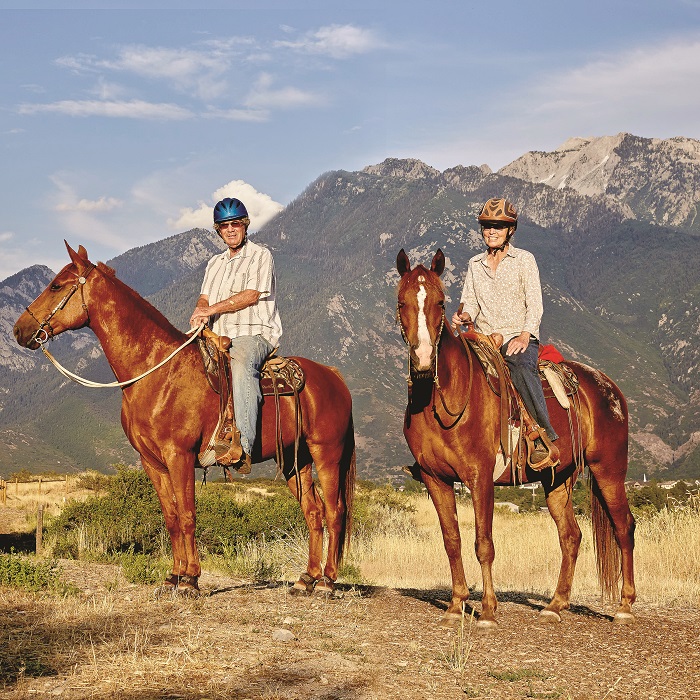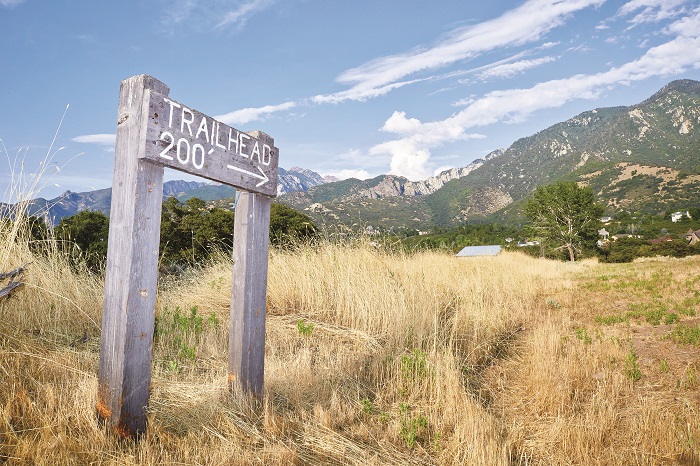
Tempers flared earlier this year when some residents learned about so-called improvements to the scenic Dimple Dell Regional Park in southeastern Salt Lake County. When they voted in November for a bond that included $4 million in upgrades for the 650-acre park, the last thing they expected was to hear that the plans included asphalt paving of a 3-mile portion of a trail in the county’s most pristine wilderness setting.
Using the slogan “Keep Dimple Dell Wild,” Monica Zoltanski, founder of the Dimple Dell Preservation Society (DDPC), led the charge to defeat the proposal, gathering more than 6,500 signatures and eventually helped to quash the asphalt pathway she and many others believed would ruin the large open space, popular with equestrian enthusiasts, hikers and others seeking refuge from the surrounding urban build-up.
Today, a task force or “working group,” as Martin Jensen, director of the Salt Lake County Parks and Recreation Department, calls it, is finalizing suggestions on how to spend the money, and will give them to Salt Lake County Mayor Ben McAdams in the next few months.
Though controversial and tense at times, the process seems to be moving along smoothly now, albeit a bit slower than some would prefer. But if it weren’t for the efforts of Zoltanski and others, the outcome likely would have been much different.
Jensen said citizens’ opposition and organization convinced him that he and others had made a mistake considering bulldozing over such a natural, wild path, called the North Rim Trail, especially with scant public input.
“We did hear loud and clear that people didn’t want a large, paved trail,” he said. “We want to make sure we do it right. We realized the importance of saving wildlife and realized the value of preserving Dimple Dell. We weren’t hell bent on paving it. And we weren’t trying to slip it under the radar.”
But that’s not how the DDPC and others saw it. “We felt blindsided,” Zoltanski said, noting the lack of public hearings to gather input on how to spend the money. “We felt betrayed in the process. We voted for park maintenance and improvements, not asphalt.”
After being asked more than once about who wrote the language for the paving, Clayton Scrivner, the spokesman for the Salt Lake County Parks and Recreation Department, said, “The division proposed it. It was not a single person, if you need a single name you could use the director’s name [Martin Jensen], but that wouldn’t be fully accurate.”
Speculation and confusion were rampant among opponents. Some questioned why so much money would be spent on paving, and if kickbacks or cronyism were involved. Jensen said the entire $4 million was never earmarked for the North Rim Trail, and it wasn’t even put out to bid.
In August, the DDPC drafted 17 priorities for the park, which the group hopes will “protect and promote public appreciation of the park through education about its rare and valuable history, archaeology (some Native American artifacts have been unearthed by Questar Gas), geology, biology and public recreation use.”
In addition to the task force’s work, the county and Sandy city paid a Riverton marketing firm, Lighthouse Research, $14,000 (which Jensen said did not come out of the bond money) to call residents and ask for their preferences and uses of the park.
What happens now is largely up to McAdams, who gets the final say. McAdams said he will take into account the working group’s recommendations and those views of the DDPC and others. Work should begin in spring.
“Dimple Dell was a great opportunity to be responsive to what residents want for their community,” McAdams said. “ . . . we must constantly seek feedback and maintain open dialog. Parks are there for residents to enjoy, and their support makes it possible to build and maintain them.”
Recommended park improvements from the Dimple Dell Preservation Community (DDPC):
· Install picnic tables, benches and tie rails
· Establish year-round restrooms
· Add clean landscape wood chips along trails
· Increase police patrol, code enforcement and animal control
· Remove amphitheater and restore natural hillside
· Build an equestrian staging area at Wrangler and Lone Peak Park trailheads
· Maintain parking lot surfaces at trailheads

To see more of Steven Vargo’s work visit Vargo Photography.





